Visit
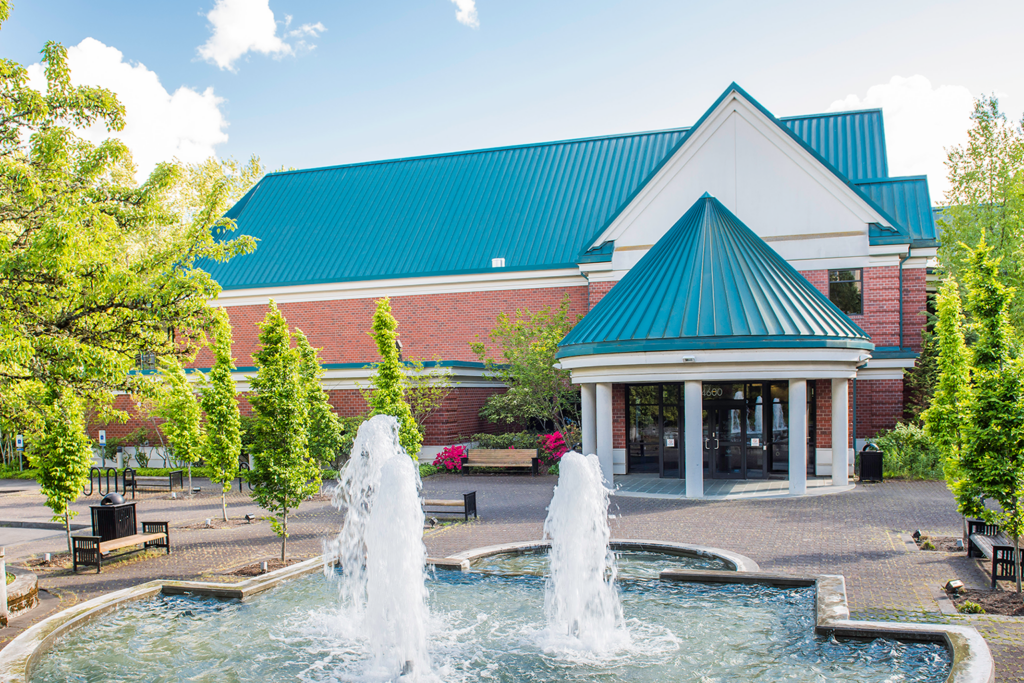
Water Resources Education Center
Contact: 360-487-7111 or vanwrec@cityofvancouver.us
Address: 4600 S.E. Columbia Way, Vancouver, Washington 98661
Hours: 10 a.m. to 5 p.m., Monday through Friday (Closed Saturday and Sunday; call for holiday schedule)
Admission: Free
Directions and Parking
Online mapping resources may not be updated regularly and may or may not be accurate, depending upon data and source used. Please refer to the driving directions below to easily find us.
From Interstate 5
Take state Highway 14 East to Exit 1, towards Camas. Use the right 2 lanes to take exit 1 for Southeast Columbia Way. Stay right and merge onto Southeast Columbia Shores Boulevard. Take an immediate left onto Southeast Columbia Way. Continue east on Southeast Columbia Way for approximately 3 miles to the roundabout. Turn left at the roundabout then turn right into the Water Center driveway. Bear right toward the Water Center parking lot.
From Interstate 205
Take state Highway 14 West to Exit 1 toward Grand Blvd/SE Columbia Way. Turn left onto Columbia House Boulevard and continue under the railroad tracks to Southeast Columbia Way. Turn east (left) onto Southeast Columbia Way and continue east for approximately 3 miles to the roundabout. Turn left at the roundabout then turn right into the Water Center driveway. Bear right toward the Water Center parking lot.
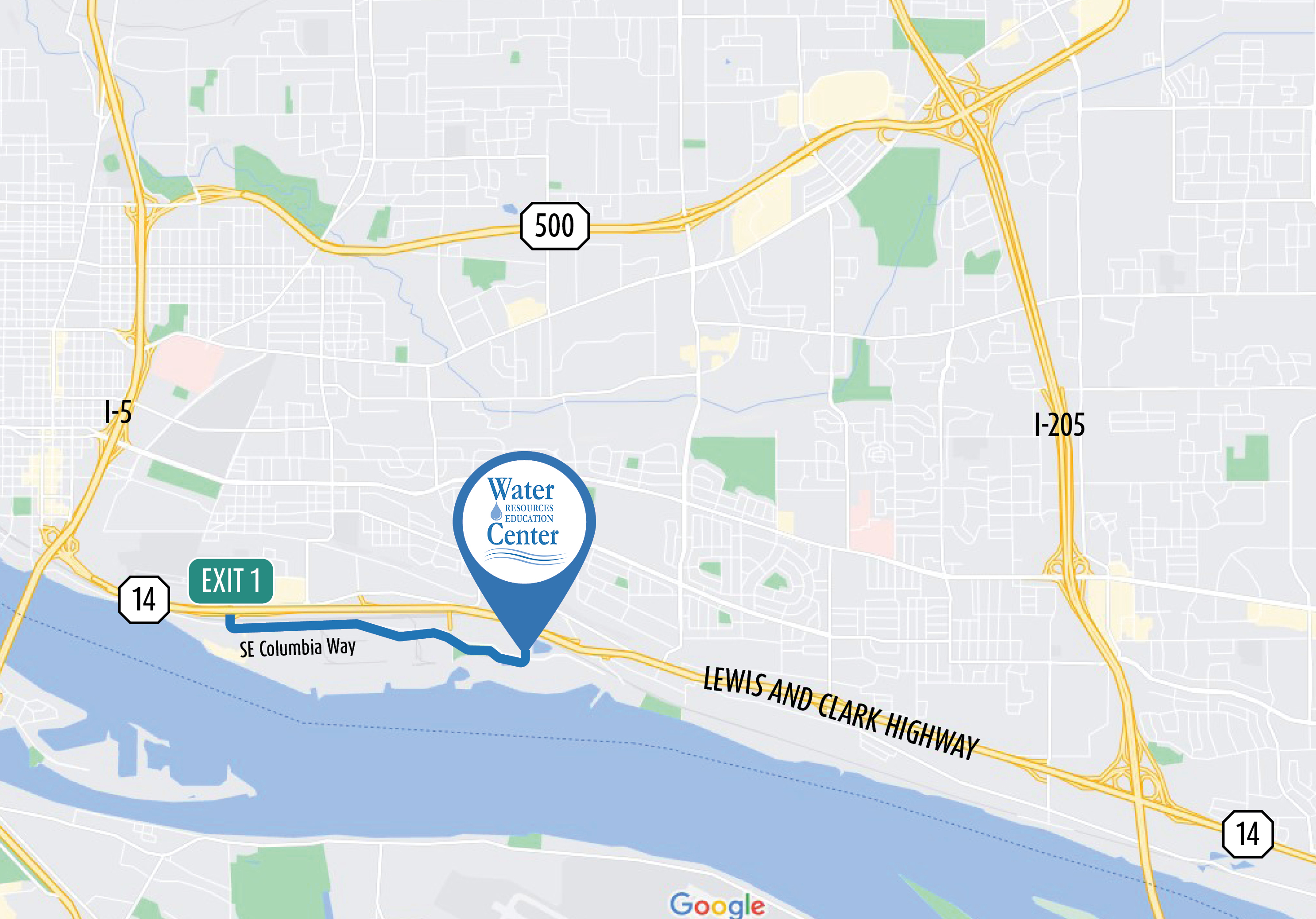
Exhibits
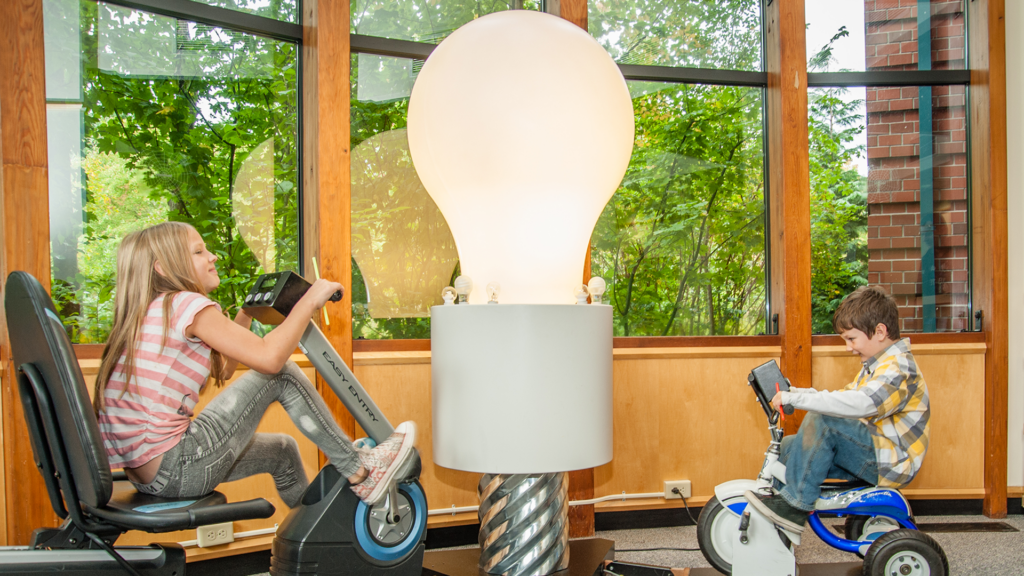
The first floor of Vancouver’s Water Resources Education Center is dedicated to learning exhibits. Visitors can guide themselves through the water cycle, explore how water flows through a watershed, discover the many benefits of trees, learn about the importance of waste management and so much more.
- Play a ‘stomping’ game to help stop the flow of litter and keep our waterways clean and healthy.
- Learn how trees help both humans and wildlife. Write a thank you note to your favorite tree.
- Discover the sounds of animals who live with us in our watershed.
- Pedal your way to power while learning how light bulbs can help salmon.
- Take a shopping trip and learn how to reduce, reuse and recycle. Watch as your decisions add up at the cash register.
- Experience the effort of getting water to your home. We guarantee, you’ll be pumped up!
Trails and Wetlands
Trails
The Water Center is located on the scenic Columbia River Renaissance Trail. The paved 5-mile-long riverfront trail connects downtown Vancouver to Marine Park and the popular beach area of Wintler Community Park. This portion of the riverfront is a part of the Southwest Loop of the Great Washington State Birding Trail and offers nature enthusiasts plenty of opportunities to see and hear a variety of riparian and wetland bird species.
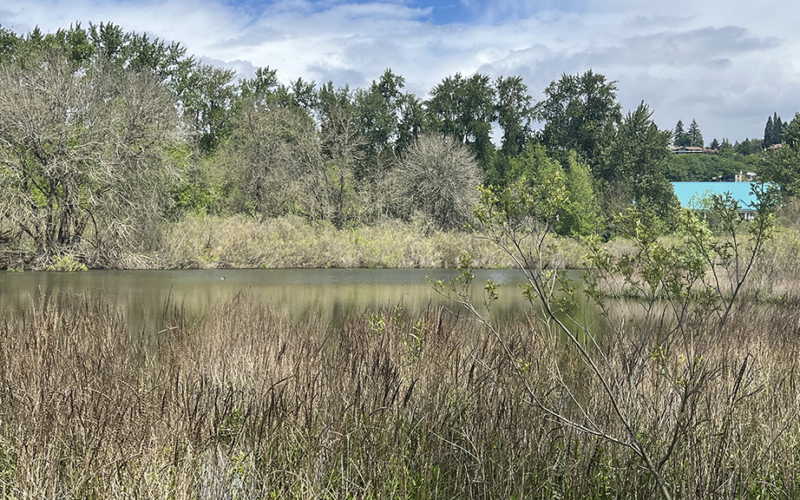
Wetlands
Across the street from the Water Center, and adjacent to Marine Park, lie 50 acres of wetland habitat. Wetlands are extremely important areas where water meets land. They play a vital role in sustaining healthy and diverse ecosystems. Wetlands store floodwaters, filter water that recharge aquifers and provide food and shelter for wildlife.
Seasonally affected by rains and snowmelt, the wetlands adjacent to the Water Center are wet in winter and spring and then dry out in the summer. One of the metropolitan area’s few remaining natural Columbia River riparian areas, these wetlands provide important habitat for Columbia basin salmon at some period in their life cycle. Chum fry have been identified as using the wetlands area as rearing habitat. Because of its proximity to a large Chum spawning area just upstream of the I-205 Bridge, it is the first off-channel rearing habitat available for juvenile salmonids to move out of the main channel and seek refuge.
Backyard Habitat and Native Gardens
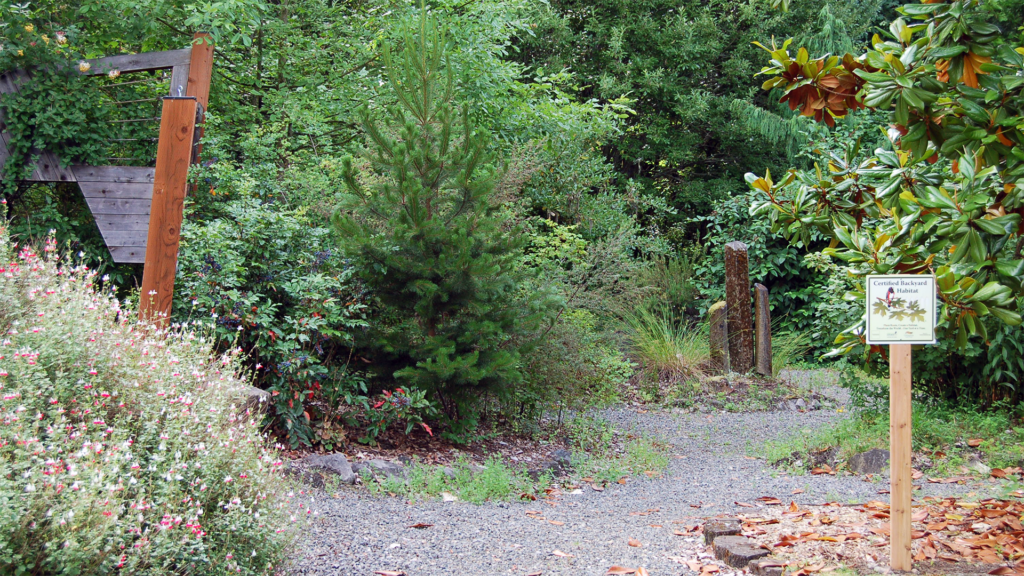
Inspiration is in full bloom in the Water Center’s gardens. Installed in 2006 and certified at the Silver Level in the Backyard Habitat Certification Program, the gardens showcase plants native to the Pacific Northwest. Our gardens demonstrate what a mature native habitat garden can look like in your garden space. Full-grown trees and shrubs offer the visitor an idea of how much space is needed for native species to thrive.
Native gardens have adapted to our climate and contribute to sustainable and healthy ecosystems. They use less water resources, limit the need for pesticides, enhance wildlife habitat and support pollinators native to our region.
Gardening Tips and Ideas
- Wherever possible, choose native plants for your garden.
- Native plants attract beneficial pollinators, support wildlife and decrease unwanted pests.
- Pick the right plant for the right place. Choose native plants adapted to the light, soil and space available in your garden.
- Group plants with similar water needs together.
- Frequent and shallow watering can be harmful to plants. Instead, water deeply and less frequently to help plants establish good root systems.
- Soaker hoses and drip irrigation methods result in less evaporation.
- Build and maintain healthy soil.
- Keep leaves in your yard in the fall and winter months. They can serve as a mulch layer and keep the soil warm, prevent runoff and provide food for year-round song birds.
- Leave your yard a little messy in winter. Remnant flowering stalks, leaves and twigs provide habitat and food for animals during the cold winter months. Hold off on your garden tidying until late winter when plants start emerging again.

